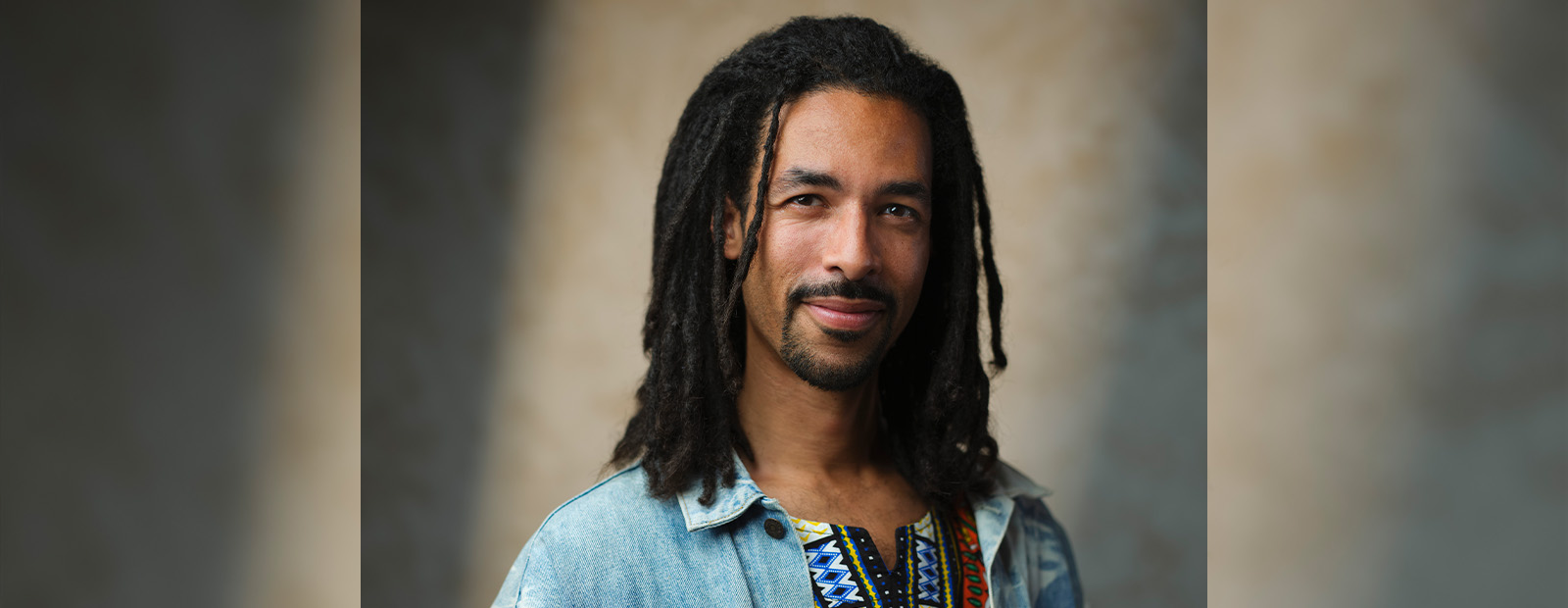The work of AJA Louden (Design Studies ’12, Design Foundations ’10) can be seen on walls all across Edmonton, as well as in cities across the province and the globe. The 2023 Distinguished Alumni Award recipient chats about his progression from graphic design to street art, how he approaches his art in different countries and how he’s helping young artists to explore their own artistic gifts.
You grew up drawing and making art. How did you turn a tin of crayons and a love of storytelling into a career?
I’ve been drawing and making art since I was a young kid. Both my parents worked a lot, so at first, it was just finding something to keep me entertained. My grandma would give me a stack of paper and this big metal tin of crayons, and from an early age, I used drawing to tell stories. I would draw little objects that were part of some kind of narrative or part of some grand universe I had somewhere in my head. I always did pretty well in school, and I briefly went to the U of A for sciences, but just couldn't quite see myself in a career that would come after that. I was working in a restaurant, and one of my friends was taking the design program at MacEwan. He started to tell me about the projects he was working on, and they just really seemed to overlap with what I already did for fun.
And then you shifted from design to mural art. How did that happen?
I was sort of narrowing in on my passion, and having a career in the design world was really valuable for that. I learned a lot about the relationship between the creativity that I had, and the real-world skills to be able to put some of those ideas into action. And then I also met a few mural artists – one of them was Jason Botkin. He really opened my eyes to the fact that muralism was a career that was achievable. I started to understand that there was a path other than design, where I could see my art exist out in the world.
How do you decide what you want to tackle in those public pieces?
It's often about listening. That's something that was reflected in the design program. Wayne Williams was one of my professors, and he really focused on that initial research stage. You can make all the pretty graphics you want, but if it's not connected to some sense of meaning, and it's not telling a story, then it's not going to do well in his class. So I think the way that I approach public art is to really make sure that I’m doing that first stage of listening – connecting with people and finding the story.
How does your approach or subject matter change based on the place that you're in?
I love food, and food is really connected to the idea of colour to me. When I eat something new, I often get new inspiration for a colour palette, or ways that colours can connect. So when I go to Barcelona and try a bunch of tapas, you might see that reflected in the work that I make there. If I have the chance to do research on those trips, then that's often reflected in the work as well. In Berlin, I painted a collaborative piece that was inspired in part by a statue that I'd seen in a museum only about a week and a half earlier.
What can we learn from public art in other parts of the world?
When you go to places like Berlin, Barcelona, Rio or Bristol, there's graffiti and street art and murals everywhere. There's only one legal wall in Edmonton. Our public art culture can be so much richer when we open up the doors to a wider variety of participants. When we look at some of these other cities with these amazing graffiti and street artists, everywhere you look, there's something telling you a story. That's one of the things that's always been important to me, and the Aerosol Academy workshop that I teach touches on the history and culture of graffiti and street art a lot.
Aerosol Academy is just one of the ways you mentor young artists. Why are those opportunities important to you?
I was lucky to have several great teachers and mentors. Mentorship isn't necessarily a super formal relationship. Sometimes it's somebody who you can call who will give you advice on your career or a project. Other times, it's meeting somebody who's in a different spot in life than you are. There's this phrase, “each one teach one,” that's common in hip-hop culture. It’s a reminder that, if we want something to continue, we need to support the next generation. Mentorship is a way to pay it forward and pay into the pot a little bit. It's not a purely altruistic thing, either – when I'm mentoring somebody, I'm contributing to the fountain of knowledge that I get to draw from as well. And it's fun, it's inspiring.
What’s next for you?
I finished up a few murals this fall, then jumped into the studio to do some tapestries and textile art. I’m doing some narrative-driven artworks, too. So I’m just exploring this universe that I'm building, trying to tell these human stories in a new way through a lens of sci-fi, speculative fiction, Afrofuturism. It’s something I’m excited about.
